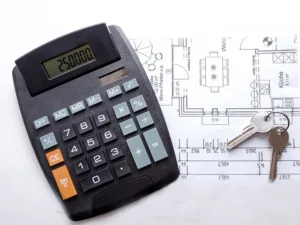Being a contractor is no easy job. Between managing employees and keeping track of complicated tasks, staying organized on the job site can be difficult. One essential element of staying contained in construction is understanding cost codes – without them, construction projects can quickly devolve into chaos! In this blog post, we’ll explain precisely what cost codes are and how they might help you manage your next building project. Read on for all the need-to-know info about cost codes in the construction industry!
Table of Contents
What are construction cost codes?
Construction cost codes are a systematic and organized framework, known as the construction cost code structure, for categorizing the costs associated with construction projects. They provide an organized structure for tracking and managing expenses related to building materials, labor, equipment, overhead costs, and other related items. Cost codes are also known as CCS (cost control systems) or CPC’s (cost per code). By using these codes, project managers can easily track expenditures from start to finish and ensure that no item is unaccounted for in their budget. Additionally, contractors can use them to accurately bill clients for the work they have completed on the job site. With this categorization system in place, it becomes easier to identify areas where money could be saved or allocated more efficiently during a project’s lifetime.
Benefits of using construction cost codes
- Construction cost codes help to keep track of expenses during a project.
- They can be used to compare different projects and find areas of potential savings. Cost codes are particularly beneficial for construction companies, as they enable these companies to track time accurately and identify areas for improvement, ultimately enhancing profitability.
- Cost codes can help you negotiate better prices with suppliers.
- They can also help you manage your budget more effectively. The adoption of standardized cost codes improves communication and transparency in the construction industry, facilitating clear and efficient communication among various stakeholders and increasing trust through openness and clarity around project costs.
- In some cases, construction cost codes may even be required by law.
Cost codes provide an efficient and organized way to track project expenses as they occur, enabling businesses to identify areas of overspending or inefficiency quickly. This information is critical for companies seeking to increase profitability and ensure that projects remain within budget.
How do cost codes help identify profitability?
Cost codes are powerful tools for businesses to identify their most profitable activities, especially when integrated within a cost code system that plays a crucial role in construction project estimation, financial tracking, and project management. Organizations gain valuable insights into which activities generate the most significant returns on investment by assigning a cost code to each activity and tracking the associated costs through this system. Cost coding also provides data about areas where profitability could be improved by making changes in processes or operations, allowing companies to make informed decisions about allocating resources and maximizing profits. With accurate cost coding data, businesses have the information they need to focus their efforts on projects that will yield maximum return on investment.
How do construction cost codes help identify overspending?
Construction cost codes, including the option to utilize existing cost codes, are an invaluable tool for businesses seeking to identify and address overspending. By assigning a unique code to each activity related to a construction project, companies can track and analyze expenses with great detail. This system allows for the use of pre-established cost codes or the creation of new ones, empowering businesses to monitor spending accurately and adjust for overspending as needed. With the ability to choose from existing cost codes or create custom ones, companies can easily pinpoint areas where costs exceed budgeted amounts or have become excessive relative to other activities on the job site. This data enables them to take corrective action, such as reallocating resources or renegotiating contracts, to reduce spending and maximize profits. Furthermore, the flexibility to update or add new cost codes ensures that the tracking system evolves with the project, providing valuable insights into how best to allocate resources so that projects stay within budget while still achieving desired outcomes.
How do cost codes enable real-time cost tracking?
Construction cost codes are an invaluable tool for businesses to track project costs in real-time. By assigning a unique code to each activity related to a construction project, companies can easily monitor expenses associated with the job and identify areas of overspending or inefficiency. With accurate cost coding data, they can make informed decisions about allocating resources and maximizing returns on investment. Additionally, construction cost codes provide valuable insights into ways that processes or operations could be improved, so projects stay within budget while still achieving desired outcomes. As such, construction cost codes enable organizations to keep their projects on track by providing them with up-to-date information about the actual costs of their activities at any given time. Integrating construction project management software enhances this process by facilitating real-time cost tracking and management of cost codes, ensuring more accurate and efficient project financial oversight.
How do construction cost codes help standardize data?
Construction cost codes are a powerful tool that helps standardize data used in the construction industry. By providing a standardized system of codes and numbers, those working in the field can quickly and accurately process vast amounts of information. These codes help to streamline operations by allowing organizations to easily categorize, organize, and track all costs associated with a construction project, including labor, materials, equipment, overhead, and specific tasks or phases of the construction process. The adoption of standard cost codes, such as those provided by the Construction Specifications Institute (CSI), further enhances this uniformity, enabling construction accounting software to efficiently organize and manage financial information. They also support data analysis and reporting by providing an easier way to compare costs across multiple projects or within the same project over time. Additionally, these codes provide transparency into costs for contractors and clients alike, so everyone involved can make informed decisions about budgeting and scheduling. Having this “big picture” view of all related costs helps ensure that each project is completed on time and under budget. The use of construction cost coding is invaluable for any organization that wants to reduce waste while ensuring accuracy in their data collection process.
How many cost codes does a construction company need?
The exact number of cost codes a construction company needs depends on the size and complexity of their projects. Generally speaking, a large construction project requires up to 100 or more cost codes to accurately track expenses, while a less complex project may require as few as 5-10 codes.
In most cases, contractors will start with a minimal number of cost codes and then add more as needed if they find that their tracking system is too limited. Contractors need to use distinct and accurate cost codes to maintain a clear overview of their financial situation and ensure that any losses are identified early before they become more serious. Furthermore, additional detail in cost accounts can make it easier for companies to identify areas where they could potentially increase efficiency or cut costs.
Ultimately, by creating an effective system of cost coding that is tailored to their operations, contractors can maintain a better understanding of their overall financial performance throughout their projects.
How to design and implement an excellent cost-coding system?
Designing and implementing a good cost-coding system is essential for organizations that need to track and manage costs. The first step in developing a cost-coding system is to determine the purpose and objectives of the system. A well-designed coding system should allow for accurate cost tracing and capture data from multiple sources to provide valuable information about how costs are allocated across different areas of the organization.
Once the purpose and objectives have been identified, it is important to define the characteristics of each cost code, including the development of a cost code structure. This structure is crucial for ensuring consistency and adaptability across the organization. It involves creating a systematic and organized framework for categorizing and tracking costs, which is essential for adapting the structure to meet regional or company-specific requirements. This includes the category, item number, supplier name, location, contact person, or project name. Establishing clear rules for assigning new cost codes is essential so employees don’t set duplicate codes or create inconsistent character lengths. Additionally, it may be beneficial to add descriptions associated with each code to help employees better understand the purpose of each one.
Cost codes should be kept as simple as possible while providing enough detail necessary for effective reporting. It is also important to consider other departmental requirements when setting up a coding structure. For instance, coding structures may need to comply with specific accounting regulations or industry standards if they will be used in financial statements or external reporting documents like tax returns.
Not to mention, it is crucial that all stakeholders have an understanding of the cost coding system before it’s implemented so that everyone understands how it works and can provide feedback on any potential issues or improvements before launch. Furthermore, establishing proper training procedures can ensure that everyone knows how to use the cost-coding system properly; this could include providing detailed instructions on how codes are assigned and creating written policies outlining acceptable uses for various codes within specific contexts. Finally, once the cost-coding system has been implemented, ongoing review processes should be established to monitor usage rates and accuracy levels over time and make changes where necessary.
Construction cost code examples
Construction cost code examples aid the process of allocating costs and timeframes associated with construction projects. Cost codes are typically composed of a numerical designation and an accompanying description, which allows managers to quickly identify what the costs relate to. They can be used for labor, materials, equipment rentals, subcontractors, overhead costs, and taxes.
When using cost coding systems, it is vital to keep a consistent structure across all project areas for easy tracking. A typical example would be assigning a series of four-digit codes that designate each specific area, such as labor (codes beginning with 1), materials (codes starting with 2), or equipment rental (codes beginning with 3). Using these codes can help streamline the budgeting process by creating visibility into where money is spent in relation to each activity within the project. It also helps prevent situations where different departments request funding multiple times for the same item or task.
Additionally, when paired with software management tools such as enterprise resource planning (ERP) systems, cost codes create an additional layer of accountability by allowing teams to track expenses more efficiently. This added transparency helps facilitate decision-making processes while providing data-driven insights into areas that require further attention during construction projects.
Is there a standard construction cost codes list?
The answer is yes – while each company may have its unique system in place, many industry-standard lists can be used as a starting point. These lists provide definitions for each code and what they represent, making it easier for everyone involved to understand how much should be spent on certain materials or labor. One of the most popular standard construction cost code lists is provided by Construction Specification Institute (CSI) called MasterFormat. By having this framework in place, contractors can save time and money while minimizing errors when dealing with complex financial information.
Standard construction cost codes list
The list has been separated into these divisions:
00: Procurement and contracting requirements
01: General requirements
02: Existing conditions
03: Concrete
04: MasonryMetals
06: Woods, plastics, and composites
07: Thermal and moisture protection
08: Openings
09: Finishes
10: Specialties
11: Equipment
12: Furnishings
13: Special construction
14: Conveying equipment
21: Fire suppression
22: Plumbing
23: HVAC
25: Integrated automation
26: Electrical
27: Communications
28: Electronic safety and security
31: Earthwork
32: Exterior improvements
33: Utilities
34: Transportation
35: Waterways and marine construction
40: Process interconnections
41: Material processing and equipment handling
42: Process heating, cooling, and drying equipment
43: Process gas and liquid handling, purification, and storing equipment
44: Pollution control equipment
45: Industry-specific manufacturing equipment
46: Water and wastewater management
48: Electrical power generation
A brief history of MasterFormat
The MasterFormat is a system of construction cost codes used by the industry for over 50 years. It was initially developed in 1963 by the Construction Specifications Institute (CSI) and Construction Specifications Canada (CSC). The purpose of this system was to provide an organized structure for tracking and managing expenses related to building materials, labor, equipment, overhead costs, and other related items. Over the past five decades, it has become one of the most widely accepted standards in construction accounting. This system provides contractors with a comprehensive framework for categorizing their costs into specific categories depending on their type of work or project size. In addition to providing an efficient way to track expenses associated with projects from start to finish, it also helps improve communication between all parties involved in the project by providing explicit definitions for each cost code and what they represent. As such, MasterFormat continues to be widely used today as an essential tool for improving efficiency during any given construction project’s lifetime.
Conclusion
Cost codes are an essential part of the construction industry, and they help to keep track of expenses and can be used to improve project management. While they may seem confusing at first, understanding how cost codes work is important for anyone in the construction industry. With a bit of practice, you’ll be able to master cost coding and use it to your advantage on future projects.
Manage cost codes better with Bauwise construction management software
Managing cost codes during construction projects can be complex and time-consuming without the right technology. Bauwise is the answer. Our software simplifies, automates, and streamlines tasks related to tracking and managing project cost codes — all within an accessible, easy-to-use suite of solutions. We strive to bring efficiency to every construction job site and ensure that costs are correctly tracked, no matter how big or small the project. With Bauwise’s construction cost code management solutions, you’ll never lose sight of your budgeting goals, no matter what changes the project faces along the way. So don’t delay – get started today with us on your construction cost code journey!
Related posts
Read our other articles where you can find useful and relevant information about construction cost codes:
About the Author

Taavi Kaiv
Taavi Kaiv is a construction specialist with over ten years of experience in the construction industry. Taavi is an accomplished construction project manager with many successful projects that have been completed under his guidance. Taavi holds a master’s degree in construction management from the Tallinn University of Technology. View profile






